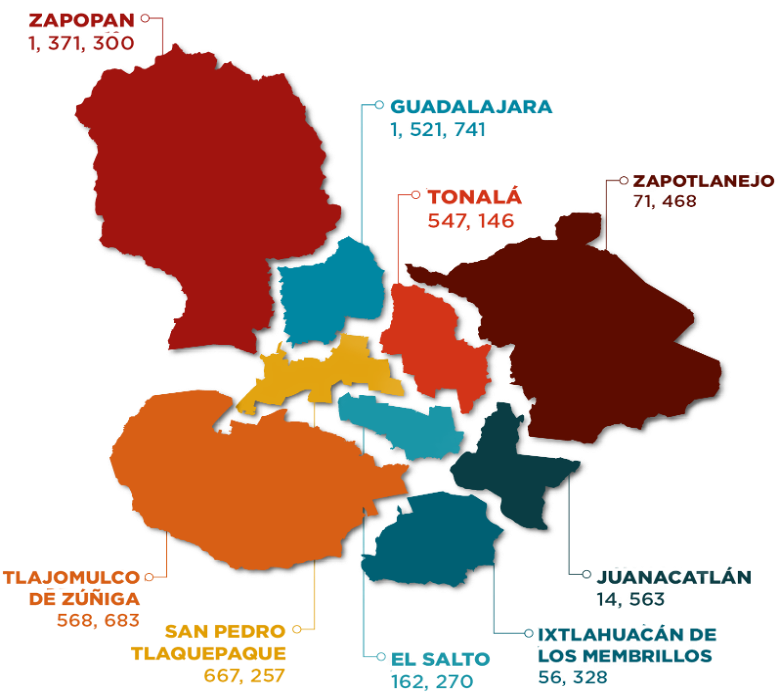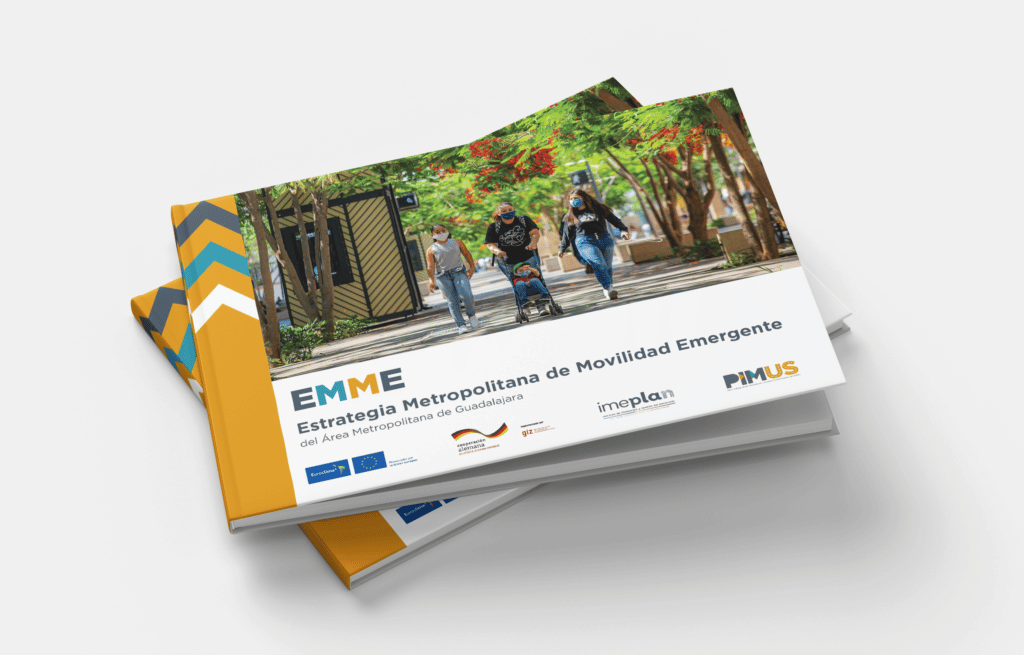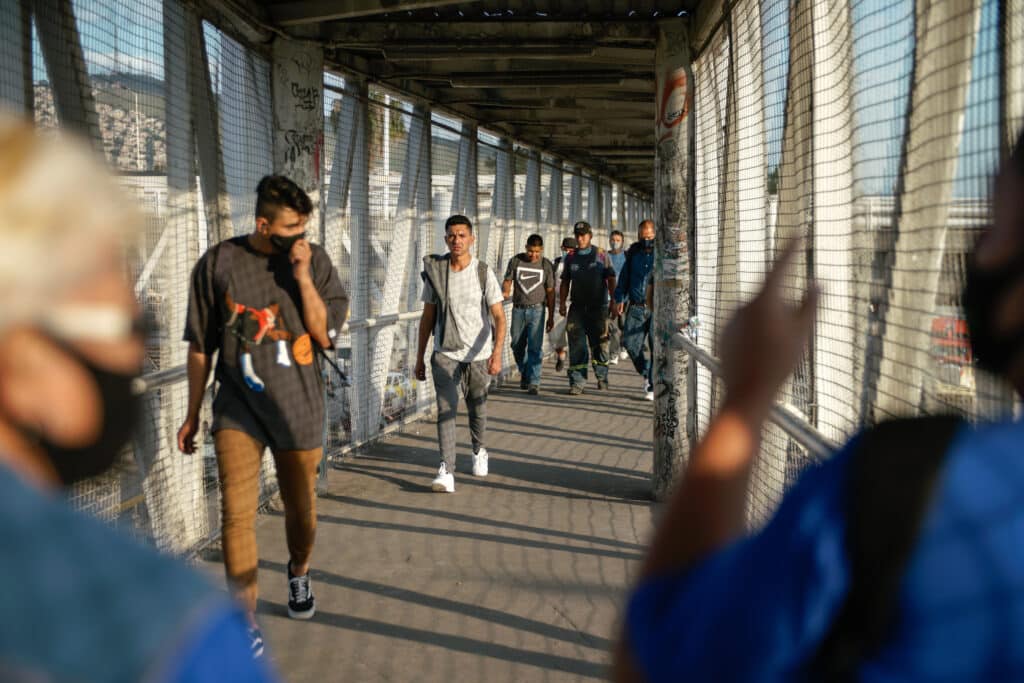
This article is part of our #StoriesofChange where we profile the work of our partner countries in developing climate actions in transport. Read more #StoriesOfChange and follow the Hashtag on Twitter.
How to transform urban mobility in the second largest metropolis in the country? In 2018, the Guadalajara Metropolitan Area (AMG) started with an ambitious goal: to improve mobility planning towards sustainable modes in its 9 municipalities, each with quite different characteristics in terms of size, population density, urban development, access to services, among others.
The Metropolitan Planning Institute (IMEPLAN) embraced this goal to contribute to Mexico’s national climate change strategy to reduce mobile pollutant emissions. This was tangigle in 2 projects approved by the EUROCLIMA+ programme “Strengthening of the Sustainable Urban Mobility Plan” and pilot project “Metropolitan Travel Analysis (Periplo)”.
After four years of implementation, I would like to tell you a little bit about this wonderful journey through the lessons learned and preliminary results we have achieved so far.

When we started the cooperation work, the AMG had a Comprehensive Sustainable Mobility Plan (SUMP) that was produced in 2015. This document was inefficient to address and solve the mobility problems of the metropolis, mainly due to the following reasons:
Our goal was to be able to build a public policy ready for implementation that would make the previous work tangible. Therefore, through our first workshops with the participation of authorities we outlined actions that would facilitate the evaluation and revision of the SUMP. These recommendations were:
1. Involve citizens, citizens and stakeholders.
2. Sustainable mobility plan in the functional urban area
3. Define a long-term vision and a clear implementation plan.
4. Develop all modes of transport in an integrated manner.
5. Cooperate across institutional boundaries for monitoring and evaluation.
Understanding the city’s mobility dynamics was one of the first challenges in drawing up a SUMP. This first step is vital, especially on a metropolitan scale.
As part of the cooperation, during these 4 years we carried out the following studies:
To achieve this, this initiative stood out for the broad involvement of actors through participatory planning programmes created with civil society, academia, the private sector and other public sector agencies.
The constraints arising from the health emergency significantly conditioned the co-construction of the SUMP vision. The main challenge was to find virtual and interactive ways to work with the actors involved, but this opened the opportunity to eliminate geographical barriers, allowing the participation of experts from other parts of the country and beyond, providing greater solidity to this process.
These learnings change the landscape of traditional participation and bring flexibility to the whole process, not only for this stage or this instrument but for all similar ones.

Parallel to the update of the SUMP, we are working on the pilot project “Metropolitan Travel Analysis” whose objective is to have a digital tool that allows the collection of data on the trips of the metropolitan population.
The digital application Periplo is a complementary part of the strengthening and updating of the SUMP, as it provides periodic information in the short term, which will allow a more dynamic and flexible mobility planning, thus taking a step forward in the use of digital tools for mobility planning.
This tool will offer citizens a trip planner that will provide them, in addition to the most efficient routes between their points of origin and destination, with complementary information for a better and safer travel experience.

This includes recommendations for greener, safer trips, location of strategic points such as taxi stations, shared bicycles and emergency points, real-time notifications for stops, public transport service failures, floods, among others.
We know that cooperation in these projects has a limited time and budget. To ensure continuity in the implementation of the SUMP, we not only provided support in updating data and information, but also worked with the IMEPLAN team to strengthen the technical capacities that allow them to follow up and put the SUMP into action.
In this regard, training was provided on structuring sustainable urban mobility plans, urban freight logistics, financial structuring, MRV systems and the use of emissions calculators (MobiliseYourCity and Ecologistics).
Also, for the implementation and operation of Periplo, the IMEPLAN team as well as the pilot project related to the management and updating of GTFS files, use of data in mobility planning, use of data visualisation platforms.

The COVID19 health crisis halted and modified the way people travel from one point to another in cities, not only in terms of the restriction of movement, but also in the way and frequency in which they do so.
As in many cities, the Guadalajara Metropolitan Area experienced the ravages of mobility restriction and also the demand to address new travel needs in the presence of COVID.19 Measures were implemented such as emergency bicycle lanes, strategies to provide free transport for health workers, temporary transport for women and children, who suffer greater vulnerability in public space, and changes in public transport.
A resilient city is one that assesses, plans and acts to better prepare for and respond to disasters that may occur. Therefore, promoting resilience means reducing risks by increasing capacities and decreasing vulnerability in order to implement effective solutions. This was reflected in the SUMP through measures learned during the contingency.
The SUMP of the Guadalajara Metropolitan Area is an interesting case for mobility planning, as it is applicable in a territory that involves 9 different municipalities with diverse characteristics that share problems and needs, but with such different resources among them, that planning becomes an important challenge.
A fundamental part has been the metropolitan governance structure already in place in the Guadalajara Metropolitan Area, which has allowed the spaces for dialogue and consensus for the development and structuring of the SUMP to take place. However, these were not easily assimilated, so the alignment between normative instruments implied an intense work of participative planning and the development of tools to facilitate their understanding.

For the SUMP, a thorough review of the rest of the existing planning policies was carried out, not only those in the field of mobility but also in all related dimensions, in addition to articulating and giving continuity over time to initiatives that would not necessarily end in a given government period. To ensure this, the Metropolitan Alignment Tool was developed, which synthesises everything involved in metropolitan development and how it relates to each other, allowing for a clear picture of all existing relationships, objectives and progress.
This tool is a great help for the different agents and guarantees the proper fulfilment of the alignment with all planning policies. Its constant revision allows to keep objectives and targets always up to date.
With the launch of the Emerging Metropolitan Mobility Strategy (EMME) and the Periplo application ready to be implemented, the EUROCLIMA+ programme concluded the cooperation activities with the Guadalajara Metropolitan Area.

IMEPLAN now has the basis to continue strengthening its PIMUS and to collect travel information closer to reality and to the changes that citizens and the local context present to them.
For our part, we have learned the importance of applying participatory and governance processes at the metropolitan scale. Although this was a challenge, integrating the collective vision allows us to approach the reality of the 9 municipalities and address the needs from their particularities, with a broader vision.
We also welcome the great effort to integrate regulations between urban mobility, land use planning and climate change actions. Implementing aligned strategies and actions will make it possible to improve the living conditions of the population of the metropolis in the long term.
An example of this is the Emerging Metropolitan Mobility Strategy (EMME) which serves as an urban mobility guide that supports the new administrations of metropolitan municipalities to cope with the new normal. It is a useful tool for the construction of the mobility component in the Municipal Development Plans, currently under preparation.
In addition, the AMG faced the consequences of the COVID-19 health crisis with resilience, through emerging mobility measures. An example of this was not discontinuing the Origin-Destination survey in 2020. This provided us with valuable information on population travel changes, which was integrated into the ENME and subsequently into the SUMP.
Innovation is one of the indispensable elements of mobility planning, and the Guadalajara Metropolitan Area has sought creative ways to do this. Such is the case of the Periplo pilot project, a new opportunity to plan for the future and adapt quickly to changes in cities.

If you believe that you suffer (potential) negative social and/or environmental consequences from IKI projects, or wish to report the improper use of funds, to voice complaints and seek redress, you can do so using the IKI Independent Complaint Mechanism.
You are currently viewing a placeholder content from X. To access the actual content, click the button below. Please note that doing so will share data with third-party providers.
More Information